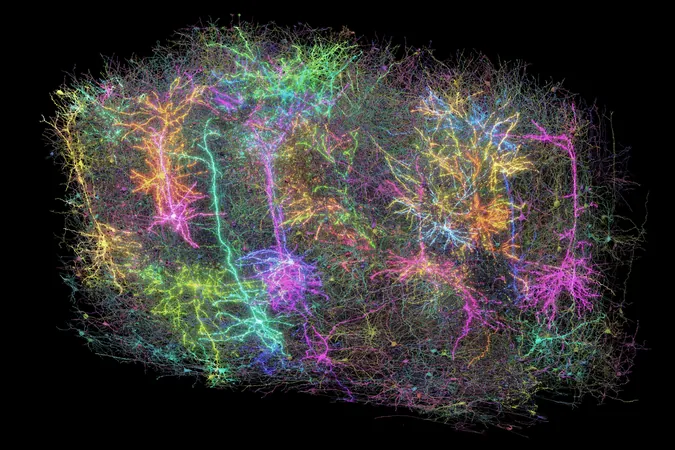
Breakthrough Study Reveals Systemic Inflammatory Response Index as a Key Predictor of Macular Degeneration
2025-04-01
Author: Jia
Introduction
In a groundbreaking analysis of the National Health and Nutrition Examination Survey (NHANES) data conducted in Tianjin, researchers have uncovered that the systemic inflammatory response index (SIRI) could effectively predict the risk of age-related macular degeneration (AMD). This important finding may transform patient care for millions at risk of this degenerative eye disease.
Study Authors and Findings
Dr. Ruoshuang Jia, from the department of anesthesiology at Tianjin Medical University, and his colleagues have emphasized the potential of the SIRI as a biomarker for assessing AMD risk. “Since it is derived from peripheral blood, its measurement is straightforward, cost-effective, and non-invasive,” Dr. Jia stated, highlighting the practicality of employing this index in clinical settings.
Study Design and Analyzed Data
The study analyzed data from NHANES collected between 2005 and 2008, focusing on participants aged 40 and older who had available information on their SIRI and AMD status. Out of 5,365 participants, 425 were diagnosed with AMD based on established criteria, including the presence of soft drusen, geographic atrophy, or other specific retinal conditions.
Subgroup Analysis
The investigation also took into account various subgroups categorized by sex, ethnicity, smoking status, and associated health conditions such as obesity and hypertension. Although some subgroups did not demonstrate a strong link between SIRI and AMD, significant correlations were observed in men, non-smokers, and individuals with hypertension and obesity.
Statistical Findings
Through rigorous multivariable logistic regression analysis, the researchers noted that the median SIRI was notably higher in AMD patients (1.23 vs 1.04; P <.001). Increased SIRI was independently associated with higher odds of developing AMD (adjusted odds ratio: 1.18, 95% CI, 1.07-1.29; P = .001). Continuous variable analysis further revealed a robust positive correlation between SIRI and AMD risk, confirming the potential of this index to predict susceptibility to the disease.
Dose-Response Relationship
What makes this study particularly revealing is the discovery of a dose-response relationship; those in the highest SIRI tertile faced significantly increased risks compared to individuals in the lowest quartile. This suggests that higher levels of systemic inflammation might play a critical role in the onset of AMD.
Broader Implications of SIRI
The implications of the SIRI extend beyond AMD, having previously been linked to various health outcomes including all-cause mortality among stroke patients and prognostic value in cardiac surgeries. Dr. Jia's team posits that the SIRI's predictive capacity could simplify the complexity associated with AMD's multifactorial nature.
Cautions and Future Research
Nevertheless, the researchers caution against jumping to conclusions. While their findings indicate a significant association between SIRI and AMD, they also acknowledge the possibility of unaccounted confounding factors that could influence these results.
Conclusion and Future Directions
“To fill the current knowledge gaps, further prospective studies are urgently needed,” Dr. Jia urged. He believes that a deeper understanding of the SIRI's role in AMD could pave the way for more targeted prevention and treatment strategies, ultimately benefiting countless patients globally.
As research continues, this study stands as a hopeful beacon in the ongoing battle against macular degeneration, encouraging further exploration into how inflammatory mechanisms can predict and potentially mitigate this sight-threatening condition.



 Brasil (PT)
Brasil (PT)
 Canada (EN)
Canada (EN)
 Chile (ES)
Chile (ES)
 Česko (CS)
Česko (CS)
 대한민국 (KO)
대한민국 (KO)
 España (ES)
España (ES)
 France (FR)
France (FR)
 Hong Kong (EN)
Hong Kong (EN)
 Italia (IT)
Italia (IT)
 日本 (JA)
日本 (JA)
 Magyarország (HU)
Magyarország (HU)
 Norge (NO)
Norge (NO)
 Polska (PL)
Polska (PL)
 Schweiz (DE)
Schweiz (DE)
 Singapore (EN)
Singapore (EN)
 Sverige (SV)
Sverige (SV)
 Suomi (FI)
Suomi (FI)
 Türkiye (TR)
Türkiye (TR)
 الإمارات العربية المتحدة (AR)
الإمارات العربية المتحدة (AR)